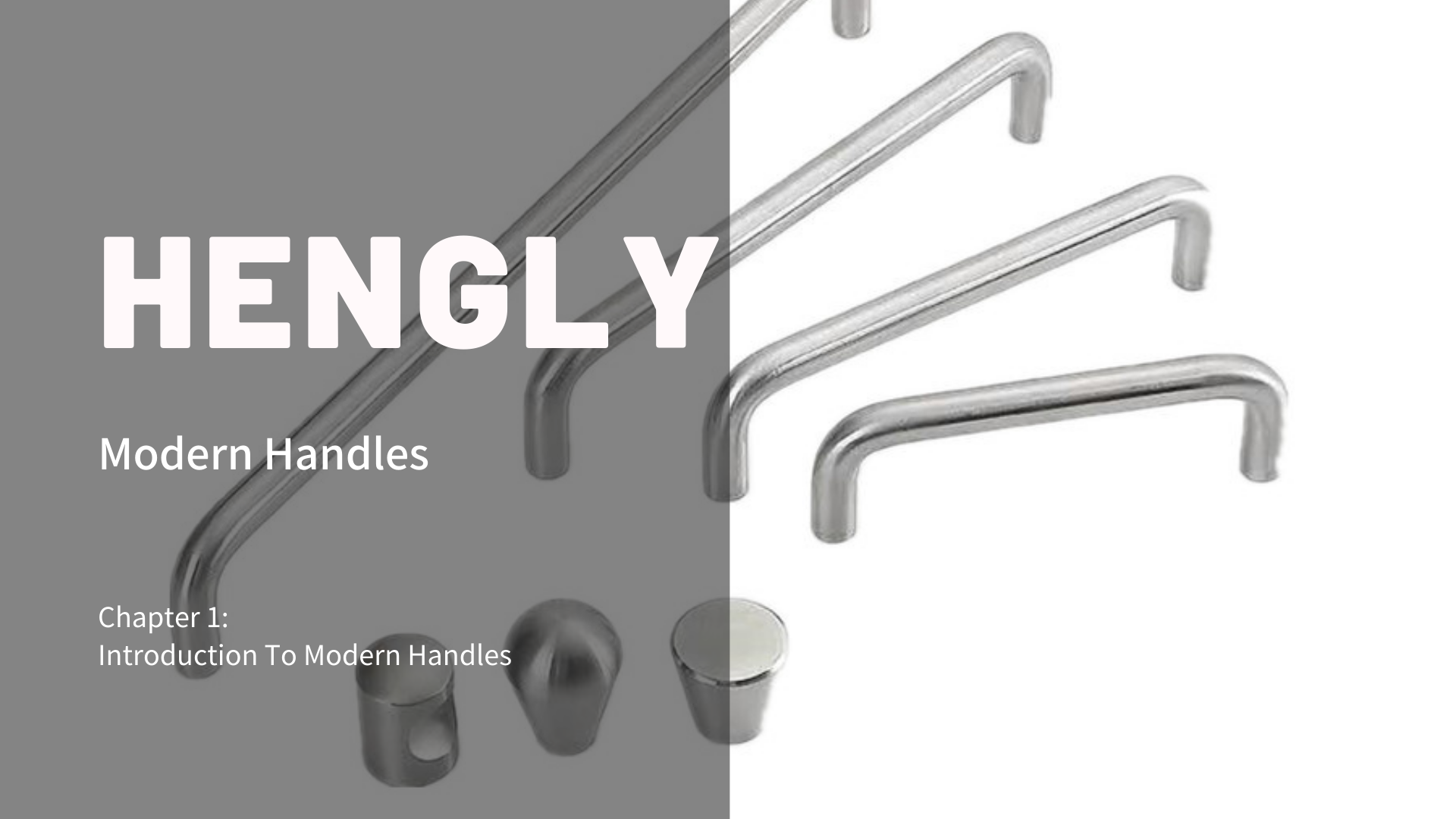Chapter 1: Introduction Of Modern Handles

While you may not realize it, handles are everywhere. You touch it daily, and it plays a crucial role in maintaining your home and workspace fully functional.
Strangely, as a widespread product, there’s little written information about its rich history. Unless you understand the past, you can’t expect to build for the future. There’s no motivation for imaginative thought. No heritage to prove, nor legacy to establish. That won’t do.
Thus, if you are looking for some inspiration, here is a brief history of cabinet handles, covering their evolution from the past centuries to the present day.
A Short History of Cabinet Handles
Architectural handles play a huge role in our day-to-day lives than one has ever thought. Handles, as you know began to take off during the industrial revolution. However, it has been providing your furniture more than functionality for many centuries. For more than 300 years, handles have been applied to furniture. Its distinct style can determine every era. All of which serves as a statement piece known by historians.
Pre-1800s Handles
In the early 1700s, architectural handles were considered functional. With know-how passed through generations, local blacksmiths made handles, latches, and hinges from iron with methods and tools which weren’t developed from medieval periods.
It was following the industrial revolution which things started to evolve. Not just the technological aspect, but also the architectural style started to change. The impressive Gregorian homes of this era featured decorative brass hardware. It was a sign of traditional modification which remains like a British taste.
As the industrial revolution change, other national styles initially emerged in continental Europe. An independent America followed these along with the rise of the Regency Style. The period of architectural handles flourished.
Victorian Handles
The Victorian Era ranging from the 1860s to 1910s is the period believed as the golden era of architectural handles. They became much accessible. The cost becomes reasonable too. That’s because factories were able to mass-produce cabinet knobs and handle. However, this mass production developed competition on a greater scale. Because of the recent competitive market, design played a crucial role. Designers have created new styles and new forms. That transformed knobs and handles into very decorative and detailed furniture accessories.
Spanish & Colonial Revival Handles
Towards the end of the century (the 1880s to 1910s), housing styles started to transform once more. As modernity signaled, many sought design motivations from the past. It was the origin of the Revival styles that simulated the conventional handle of times to be mass-produced for the modern market.
A colonial revival emerged in America along with decorative blacksmithing motivated by the past to rejoice in the centennial year. Europeans established Spanish Colonial & French Normal revival styles. On the other hand, English revival handles integrated with medieval motifs, hand-hammered pulls, and traditional ironwork for the most romantic design era.
Arts & Crafts Handles
Progressive architects were shifting away from extravagant historical styles, and machine-cut detail towards clean, practical, and simple designs in the 1900s and 1930s. The hardware of this era was made known to be used and considered to be beautiful. Thinkers such as William Morris influence this period.
Further, pre-industrial metals like copper, brass, bronze, and iron finished along with a rustic, aged effect are common for the handle of this era. From a design point of view, the emphasis was to carry out the natural beauty of the metal. It also allows every article to fulfill its purpose as directly and simply as possible.
Modern Handles
The following major period was the Modern Era. It lasted two decades around a focal point in modern history. It took place between the 1930s and the 1950s. The Modern Era was impacted by World War II that marked a substantial distinction in the function and form of the handle. The period brought a more linear, simpler, and functional design. Along with less focus on aesthetics, the details of the designs of the Victorian Era were left behind.
The modern era would not last. As soon as after the battle, designers and architects were encouraged to bring back the inspired designs of the Victorian period. They revolutionize them along with a contemporary twist.
Contemporary Handles
The contemporary period of architectural handles dawned in the 1970s with interior designers and architects shifting away from just being functional. The styles of the past have been reestablished once more, but more designers are experimenting with handles as an independent art.
From personalized cabinet handles to custom finishes, the possibilities with these handles are extremely endless. You need to understand where to search, and you’ll find something that suits any budget or style.
After more than 300 years of cabinet handles history, which brings us up to the present time? It’s the designers of today who hold the key to the future. Who knows what the future will bring? We are lucky to live in such a thrilling time. For today, you are living in an era where the architectural handles have the power to tell stories through their details and textures, providing more meaning to your furniture.
